Visiting the Auschwitz-Birkenau Memorial is a sobering and significant experience for many travellers. To ensure you have a smooth visit, it’s important to be aware of ticket information and the various options available for you.
Admission to the grounds of the Auschwitz-Birkenau Memorial is free of charge. However, to guarantee your entry, you should reserve your entry cards on visit.auschwitz.org. For a better understanding of the history of Auschwitz, it is suggested you visit with a guide-educator, for which fees are charged. Make sure to have your personalised entry pass and ID when visiting, as they are required for entrance. Note that visits to the Museum by children under the age of 14 are not recommended.
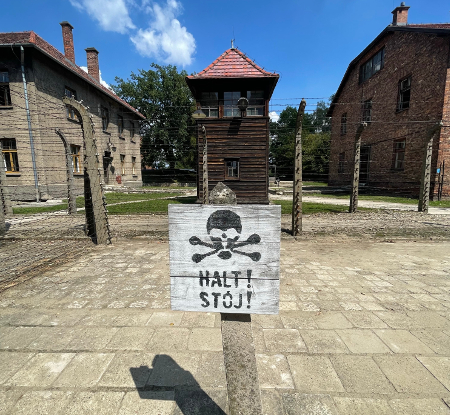
To reach the museum, there are bus and minibus stops near the grounds, with service to Krakow and Katowice. Two international airports are also located within roughly 50 kilometres of Oświęcim: Kraków-Balice and Katowice-Pyrzowice. So, plan your trip accordingly and prepare for a deeply impactful and educational experience.
Table of Contents:
Visiting Auschwitz Tickets
Auschwitz, a complex of Nazi concentration camps, stands as a vital historical site for understanding the events of World War II and the Holocaust.
Today, the Auschwitz-Birkenau State Museum memorial and museum offers visitors a chance to explore the grounds and learn about its history.
Read also:
Auschwitz I tickets
The first concentration camp established by the Nazis in Poland was Auschwitz I. It now serves as the main location of the Auschwitz-Birkenau State Museum.
For an insightful experience, consider engaging a guide-educator who can provide expert knowledge about the camp’s history and prisoners.
When visiting, you’ll find various exhibitions displaying the living conditions of prisoners, as well as personal belongings that were taken from those who were detained in the camp.
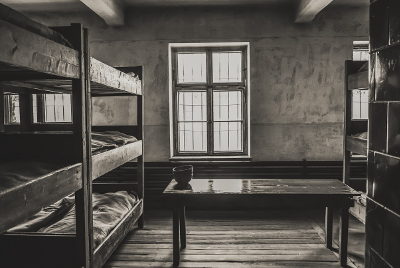
It’s essential to approach this area of the memorial with respect and an open mind, as many of the items on display are a testament to the suffering of those who endured life in Auschwitz I.
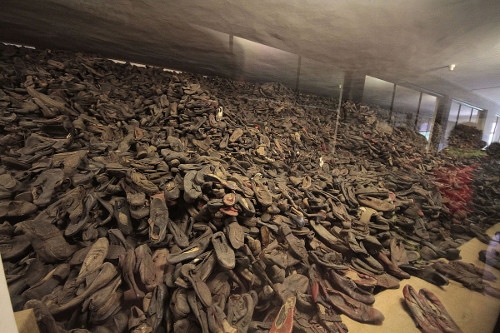
Auschwitz II-Birkenau Tickets
Auschwitz II-Birkenau, the second camp constructed, served as the largest extermination centre during the Holocaust. To further comprehend the scale of the tragedy that unfolded, take the museum bus that shuttles between Auschwitz I and Birkenau.
No bus fare is required, and buses depart from the former Auschwitz I concentration camp as follows:
- April – October: Every 10 minutes
- November – March: Every 30 minutes
At Auschwitz II-Birkenau, you’ll encounter the haunting remains of the gas chambers, as well as the vast scale of the camp.
Take some time to walk around this area and reflect on its history, while remembering the unimaginable hardships faced by its prisoners. This visit can be an emotional experience, and it is encouraged to approach it with respect and sensitivity.
In conclusion, to get the most out of your visit to Auschwitz, it is important to explore both Auschwitz I, the main camp and location of the Auschwitz-Birkenau State Museum, and Auschwitz II-Birkenau, the site of the largest extermination centre during the Holocaust.
Reserve your entry cards, consider engaging a guide and take advantage of the free museum bus to broaden your understanding of the history and events that took place at these historic sites.
Auschwitz Ticket Information
Entrance Ticket
Admission to the grounds of the Auschwitz-Birkenau Memorial is free of charge. However, you need to reserve your entry card on their official website at visit.auschwitz.org or take some guided tour.
Keep in mind that it’s essential to bring a valid ID with you, as all entry passes are personalised. Visits to the Museum by children under the age of 14 are not recommended.
Auschwitz Guided Tours
To enhance your understanding of the history of Auschwitz, it’s recommended that you book a guided tour with a guide-educator. The standard guided tour lasts approximately 7 hours and includes skip-the-line access to the Auschwitz-Birkenau camp.
Your expert guide will provide you with an insightful account of the camp’s horrific history. If you’re travelling from Krakow, the tour usually includes a round-trip journey in an air-conditioned minibus.
Please note the following key information about guided tours:
- Duration: 7 hours
- Inclusions: Skip-the-line access, expert guide, round-trip transport from Krakow (if applicable)
Auschwitz Tickets Cancellation & Refund
When booking a guided tour, it’s important to review the terms and conditions regarding cancellations and refunds. Many tour providers offer free cancellation and a full refund if you cancel within a specific time frame before the scheduled tour date.
To change or cancel your booking, you’ll likely need to contact the tour provider directly. Make sure you have your booking reference and the details of your reservation at hand.
In summary, to visit the Auschwitz-Birkenau Memorial, you’ll need to reserve a free entrance ticket online, while guided tours are available for purchase.
Pay close attention to the terms and conditions of your booking, particularly regarding cancellations and refunds. And finally, don’t forget to bring valid ID for entry.
Auschwitz Transportation and Accessibility
From Krakow
When travelling from Krakow to Auschwitz, you can book a tour package that includes round-trip transportation and an entry ticket for a hassle-free experience.
The tour typically lasts for about 7 hours and provides a live-guided experience to help you understand the history of Auschwitz-Birkenau. Additionally, you can opt for a taxi or bus service from Krakow.
On-Site Transportation
Once you arrive at the Auschwitz-Birkenau Memorial, you can avail yourself of the free museum shuttle bus service.
This bus shuttles between the former Auschwitz I concentration camp and Birkenau. The shuttle bus operates every 10 minutes between April and October and every 30 minutes between November and March. No bus fare is required for this service. Read also Auschwitz March Tour
Wheelchair Access
Auschwitz I site is wheelchair accessible, making it possible for visitors with mobility impairments to explore the area.
However, certain parts of the site, like the barracks and watchtowers, may not be easily accessible due to their historical nature. It is always a good idea to check with the tour operator or the memorial management regarding specific accessibility requirements before your visit.
Visiting Auschwitz-Birkenau is an important and poignant experience. Plan your visit, taking into account transportation and accessibility needs, to get the most from your time at this significant historical site. Remember to book your entry tickets in advance at visit.auschwitz.org for a seamless experience.
Auschwitz Tour Experiences
Auschwitz Guided Tour Options
When visiting Auschwitz, you have a few guided tour options to choose from. These tours typically include visits to both Auschwitz I and Birkenau (Auschwitz II). Read more Krakow: Auschwitz-Birkenau Full-Day Guided Tour
A knowledgeable guide will provide historical context and a deeper understanding of the events that unfolded at these locations.
Guided tours are available in various languages such as English, Italian, French, Spanish, German, and more. The duration of these tours can be up to 8 hours. It is essential to book your tour in advance, as there is a limited number of spots available.
Auschwitz Individual Visit
If you prefer to explore the site on your own rather than participate in a guided tour, you can opt for an individual visit. Read more Auschwitz Tickets Without Guide
Admission to the grounds of the Auschwitz-Birkenau Memorial is free of charge, but you need to reserve an entry card on visit.auschwitz.org.
For a self-guided tour, a guidebook is available in 19 languages, allowing you to learn about the history and significance of both Auschwitz I and Birkenau at your own pace. While visiting, pay special attention to the crematoria, as they are an important and sombre aspect of the site’s history.
Auschwitz Study Tour
For those seeking a more in-depth understanding of the Holocaust and concentration camps, a study tour of Auschwitz-Birkenau is an ideal choice.
These tours are led by expert guides and are more comprehensive than general tours. A study tour covers various aspects, including the living conditions of prisoners, the process of extermination and the gas chambers, and the remnants of the crematoria.
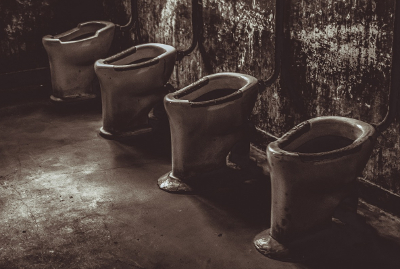
Additionally, the study tour delves into the history and operation of the entire Auschwitz complex, offering a thorough and insightful educational experience.
Auschwitz Visitor Services and Restrictions
Education and Exhibits
The Auschwitz-Birkenau Memorial and Museum provides various educational resources and exhibits to help visitors understand the history of the site. When reserving your entry card on visit.auschwitz.org, it is suggested to engage a guide-educator for a better understanding of the history.
Visiting Auschwitz can take a minimum of three-and-a-half hours. It is advised to allocate at least 90 minutes for the Auschwitz site and an equal amount of time for Auschwitz II-Birkenau. Please be aware of special closures on January 1, December 25, and Easter Sunday.
The museum’s facilities are wheelchair accessible, ensuring everyone can partake in the educational experience.
Baggage Policy in Auschwitz
It is essential to consider the museum’s baggage policy before your visit. Backpacks and handbags larger than 30x20x10 cm are not allowed on the site, so plan accordingly.
The Visitor Services Centre provides locker facilities for storing your belongings during your visit. Keep your valuable items close to you, as the museum is not responsible for any lost or stolen belongings.
Auschwitz Experiences and Reviews
When planning your visit to Auschwitz, it’s essential to know what to expect and learn from others’ experiences. Many visitors have shared their insights on TripAdvisor, discussing various aspects of their tours, such as the meeting point, accessibility, and the overall experience.
The Auschwitz & Birkenau Live Guide Tour Entrance Ticket is a popular choice amongst travellers, with 92% of them recommending the tour. Priced from 14€ per adult, this option offers a lowest price guarantee, ensuring you’re getting the best deal. This tour is suitable for ages 16-120, with a maximum of 20 participants per group. The duration of the tour is approximately 3 hours, so plan your day accordingly.
Departure details are provided when booking, and the tour typically returns to the original departure point. It’s essential to be on time, as these tours are known to begin promptly. For those concerned about accessibility, it’s worth noting that Auschwitz-Birkenau Memorial and Museum may present some challenges, such as uneven terrain and narrow spaces.
As for the cancellation policy, you can enjoy free cancellation up until a specified time before the tour. Similar experiences are available through other tour providers, so it’s worth comparing options to find the perfect fit for your needs and preferences.
The reviews often mention friendly and knowledgeable guides, which is crucial for an informative and engaging tour. Headphones are sometimes provided to help you hear the guide clearly as you explore the vast historic site.
One key element of the day trip is the visit to the crematoriums, a sombre and powerful experience for many. Detailed reviews suggest that this is not an aspect to be missed.
Overall, visiting Auschwitz-Birkenau Memorial and Museum is a profoundly moving and educational experience that will leave a lasting impression. By considering the various aspects of different tour options, you can choose the one that best suits your personal preferences and requirements.
Frequently Asked Questions
What is the best way to secure tickets for a guided tour?
To secure tickets for a guided tour, it’s best to book your tickets online in advance, as this ensures a spot on your preferred date and time. Visiting the official website of the Auschwitz-Birkenau Museum is a practical option to check for available tours and purchase your tickets.
How much does it cost to visit Auschwitz?
There are various ticket options available for visiting Auschwitz, depending on the type of tour you choose. Some tours, including entrance to the museum and a professional guide service, range from £20 to £50. For a more accurate and up-to-date pricing, it’s recommended to check the official website or your preferred tour provider.
Can you visit Auschwitz without a tour guide?
Yes, you can visit Auschwitz without a tour guide. However, considering the historical importance and the vastness of the site, having a guide can significantly enhance your experience and understanding of the events that took place there. If you decide to explore the site on your own, at least three-and-a-half hours should be reserved for your visit.
What are some recommended Auschwitz tour packages?
There are numerous Auschwitz tour packages available, depending on your interests and schedule. Some packages include round-trip transportation from Krakow and an expert guide, usually lasting around 7 hours. It’s a good idea to check the reviews and ratings of different tour providers to find one that suits your preferences.
How long does a typical Auschwitz tour take?
A typical Auschwitz tour takes approximately 7 hours, which includes time spent at both Auschwitz I and Auschwitz II-Birkenau camps. The duration can vary depending on factors such as your tour package and transportation. Allow a minimum of three-and-a-half hours if you’re planning to visit on your own without a guide.
Are there any combined tours for Auschwitz and other nearby attractions?
Yes, there are combined tours available, which include a visit to Auschwitz and other nearby attractions, such as the Wieliczka Salt Mine or the Schindler’s Factory. These tours provide a more comprehensive experience of historical and cultural sites in and around Krakow. Make sure to research and compare different tour options before booking to find one that suits your interests.






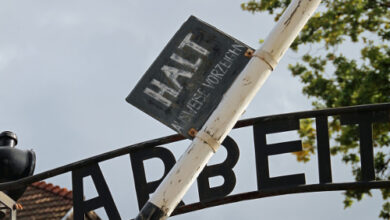
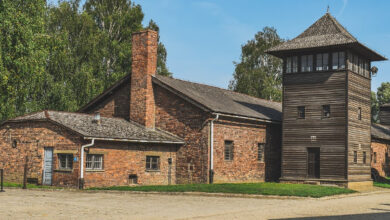
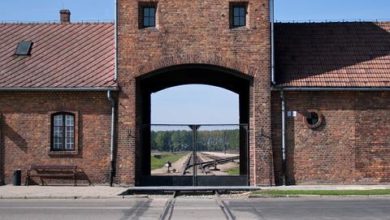
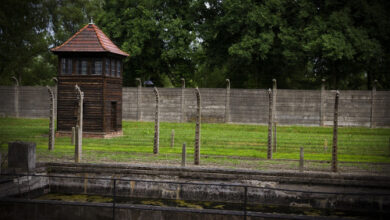
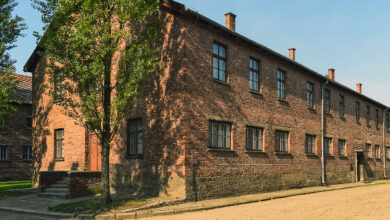
As a descendant of Holocaust survivors, visiting Auschwitz was an incredibly emotional and personal journey for me. It was heartbreaking to see the place where so many innocent lives were lost, but I also felt a deep sense of connection to my family history. The memorial does an excellent job of honoring the victims and educating visitors about the horrors of the Holocaust. It’s a difficult but necessary place to visit, and I’m grateful for the opportunity to pay my respects to those who perished there.
Visiting Auschwitz was an incredibly powerful experience for me as a young person. It’s one thing to learn about the Holocaust in school, but actually being there and seeing the scale of the atrocities is something else entirely. I think it’s so important for people my age to visit places like this and to understand the consequences of hatred and intolerance. It’s a difficult but necessary lesson, and one that I will never forget.
I visited Auschwitz while on a trip to Poland, and it was an eye-opening experience. As a Muslim, I believe it’s important to stand in solidarity with all victims of hatred and intolerance. The memorial does an excellent job of educating visitors about the horrors of the Holocaust and the dangers of allowing discrimination to go unchecked. It’s a somber but necessary reminder of the importance of working towards a more just and peaceful world.
As someone who lost family members in the Holocaust, visiting Auschwitz was an incredibly personal and emotional experience for me. It was devastating to see the place where so many innocent lives were lost, but I also found it to be a powerful tribute to their memory. The exhibits are very well done and provide a lot of important historical context. It’s a difficult but necessary place to visit, and I’m grateful for the opportunity to pay my respects.
Visiting Auschwitz was one of the most emotionally challenging things I’ve ever done, but I’m glad I went. It’s a stark reminder of the horrors that can be inflicted when hatred and prejudice are allowed to flourish unchecked. The memorial does an excellent job of honoring the victims and educating visitors about the atrocities that took place there. It’s a heavy experience, but one that I think everyone should have.
I had the opportunity to visit Auschwitz while on a trip to Poland, and it was a deeply sobering experience. As someone who has studied the Holocaust, I thought I knew what to expect, but actually being there was incredibly overwhelming. The exhibits are very well done and provide a lot of important historical context. It’s a difficult place to visit, but I believe it’s important for everyone to see and remember what happened there.
I visited Auschwitz as part of a school trip, and it was an experience that will stay with me forever. Our guide did an excellent job of explaining the history of the camp and the horrors that took place there. It’s hard to wrap your head around the scale of the tragedy, but seeing the piles of shoes and personal belongings really brought it home. It’s a heavy but important place to visit, especially for younger generations.
As a Jewish person, visiting Auschwitz was an incredibly emotional journey for me. It was heartbreaking to see the remnants of the concentration camp and to think about all the lives that were lost there. At the same time, I found it to be a powerful testament to the resilience of the human spirit and the importance of keeping the memories of those who perished alive. It’s a difficult but necessary place to visit.
Visiting Auschwitz was a deeply moving and eye-opening experience. It’s hard to comprehend the scale of the atrocities that took place there, but seeing it firsthand really puts things into perspective. I highly recommend taking a guided tour to fully understand the historical context and significance of the site. It’s a somber reminder of the importance of standing up against hatred and intolerance.